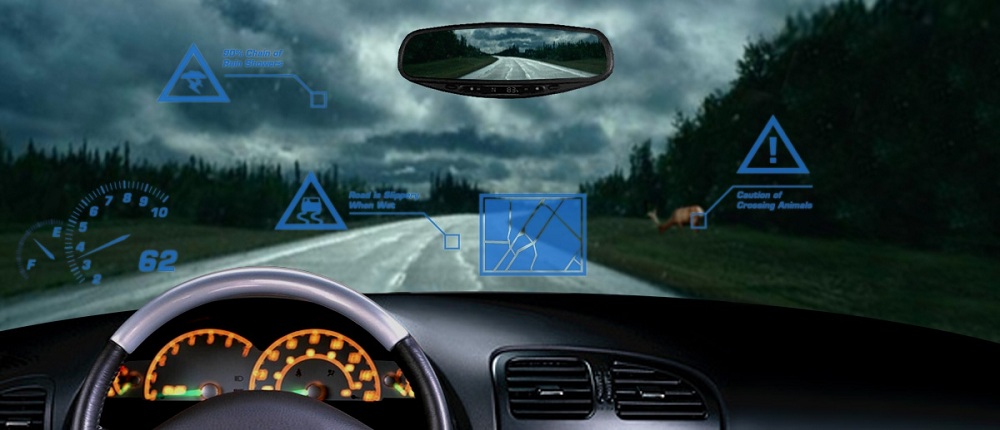New Display Technology Makes Your Windshield a Dashboard

Researchers at Sun Innovations Inc. have developed an enhanced "transparent display" technology — also known as a fluorescent emissive projection system — that turns an entire glass window or windshield into a motion display panel without affecting the view through the glass.
The image above shows a full windshield display concept from Sun Innovations Inc., viewable from any angle.
Sun Innovations purchased the tech from SuperImaging Inc., which manufactures dynamic digital projection displays on crystal clear surfaces, so they could enhance the display technology with their knowledge of advanced nano-materials.
Sun Innovations' advanced materials enable the full windshield display to show a range of information, such as opaque images or data. Researchers at the company, supported by the NSF's Small Business Innovation Research program, are using this new nanotechnologyto rid the display of obstacles that typically plague current window displays, including limited-view angles and hazy, cloudy displays.
Using advanced nanotechnology called nano-phosphors, the new technology will enable an entire vehicle windshield or building glass window to act as an electronic display screen, without affecting the driver or shopper's ability to see though the window.
Applications for the technology include storefront glass windows, hi-def video displays on glass panels and other high contrast projection displays.
This Research in Action article was provided to LiveScience in partnership with the National Science Foundation. Any opinions, findings, and conclusions or recommendations expressed in this material are those of the author and do not necessarily reflect the views of the National Science Foundation. See the Research in Action archive.
Get the world’s most fascinating discoveries delivered straight to your inbox.



